Q
Is RS6 a supercar?
The Audi RS6 is a high-performance estate car. Although it boasts powerful performance and excellent capabilities, it doesn't fall into the category of supercars. The RS6 is equipped with a 4.0-liter V8 twin-turbocharged engine, capable of reaching a maximum horsepower of around 600. It can accelerate from 0 to 100 km/h in just about 3.6 seconds. Its performance is indeed comparable to some supercars. However, supercars typically focus more on extreme lightweight design, track performance, and low-slung body styling, while the RS6 combines daily practicality with high performance, making it a high-performance estate or a luxury performance vehicle.
In Malaysia, the RS6 is well-liked by many car enthusiasts for its strong power and practicality. In particular, its unique estate car silhouette and all-wheel-drive system are well-suited to the diverse local road conditions. If you're looking for a vehicle with even more extreme performance, you can keep an eye on the Audi R8. It's a mid-engine supercar that better fits the definition of a supercar.
All in all, the RS6 is a very powerful high-performance vehicle, but its positioning and design concept differ from those of traditional supercars.
Special Disclaimer: This content is published by users and does not represent the views or position of PCauto.
Related Q&A
Q
Is the Audi RS6 manual or automatic?
Currently, all models of the Audi RS6 come standard with an 8 - speed Tiptronic automatic transmission, and there is no manual transmission option. The combination of the 4.0-liter V8 twin-turbocharged engine and the automatic transmission in this high-performance station wagon can deliver 600 horsepower. It only takes 3.6 seconds to accelerate from 0 to 100 km/h. The automatic transmission has an extremely fast shifting speed and can withstand a huge amount of torque, which is very suitable for the congested urban traffic in Malaysia as well as the needs of high-speed cruising. In fact, most high-performance vehicles nowadays use automatic or dual-clutch transmissions because the computer-controlled shifting is more accurate and faster than manual operation. For models like the RS6 that emphasize both daily practicality and ultimate performance, the automatic transmission can balance comfort and sporty performance. The hot and rainy climate in Malaysia also makes the stable characteristics of the automatic transmission more favorable. If you want to experience the fun of manual shifting, you can consider some models in the Audi S series or entry-level performance cars. However, as the flagship station wagon, the automatic transmission is indeed the most reasonable choice for the RS6.
Q
What is the comfort mode on the Audi RS6?
The Comfort Mode of the Audi RS6 is a preset option in the driving mode selection system. It's mainly optimized for daily driving scenarios. By adjusting parameters such as suspension damping, steering assist, transmission shifting logic, and throttle response, it offers a smoother driving and riding experience. In the common urban congested traffic conditions in Malaysia or during long-distance drives, this mode can effectively reduce the firmness of the chassis, absorb road bumps, and at the same time reduce the aggressive feedback from the engine and exhaust system. It's suitable for family trips or situations where you need a relaxing drive.
To expand a bit, the driving modes of the RS6 usually also include Dynamic Mode, Auto Mode, and Individual Mode. The Dynamic Mode enhances the performance, while the Comfort Mode focuses more on fuel economy and quietness. For Malaysian users, the Comfort Mode is particularly useful in hot weather and mixed road conditions. It allows you to enjoy the high-performance essence of the RS6 while also taking into account daily practicality, such as a gentle air-conditioning start and a more linear power output.
It should be noted that there may be slight differences in the mode tuning of RS6 models from different years, but the core logic always revolves around balancing performance and comfort.
Q
What is the top speed of the Audi RS6?
As a high-performance station wagon, the officially announced top speed of the Audi RS6 is 280 km/h. If you opt for the Dynamic Plus package, it can be increased to 305 km/h. This is thanks to its 4.0-liter V8 twin-turbocharged engine, which can output 600 horsepower and 800 Nm of torque. Paired with an 8-speed Tiptronic transmission and the quattro all-wheel-drive system, this car can still demonstrate excellent stability and acceleration performance under the tropical climate and changeable road conditions in Malaysia. For Malaysian car enthusiasts, the RS6 not only offers the practical space of a station wagon but also has the performance of a supercar, making it very suitable for players who pursue both speed and practicality. It's worth mentioning that although the RS6 has a very high top speed, traffic rules still need to be followed on Malaysian roads. After all, safe driving is the most important thing. In addition, the chassis tuning and aerodynamic design of the RS6 have also been specially optimized, allowing it to maintain excellent handling even at high speeds, enabling drivers to experience Audi's profound technical accumulation in the field of performance cars.
Q
Does the RS6 have 4 wheel steering?
Yes, the Audi RS6 Avant is indeed equipped with a four-wheel steering system (4 Wheel Steering). This technology can enhance the vehicle's stability when cornering at high speeds. Meanwhile, it can reduce the turning radius when driving at low speeds, making the driving more flexible. It's particularly suitable for the narrow roads in Malaysian cities or winding mountain roads. The four-wheel steering system allows the rear wheels to turn in coordination with the front wheels. At high speeds, the rear wheels turn in the same direction as the front wheels to increase stability, while at low speeds, the rear wheels turn in the opposite direction to improve flexibility. In addition to the RS6, high-performance or luxury models like the Porsche 911 and BMW 7 Series also adopt similar technologies. And this configuration is becoming more and more common in high-performance models in the Malaysian market. Especially for car owners who pursue driving pleasure and practicality, four-wheel steering can significantly enhance the performance in daily driving and intense maneuvers. If you're considering buying the RS6 or other high-performance cars, you can take a test drive to experience the actual effect of four-wheel steering and feel its advantages on different road conditions.
Q
What is the difference between RS6 and RS6 performance?
The main differences between the Audi RS6 and the RS6 Performance lie in power tuning and performance. The RS6 is equipped with a 4.0-liter V8 twin-turbocharged engine, delivering 600 horsepower and 800 Nm of torque. In contrast, the RS6 Performance boosts the power to 630 horsepower and 850 Nm of torque. At the same time, it optimizes the turbo response and exhaust system, shortening the 0 - 100 km/h acceleration time to 3.4 seconds (3.6 seconds for the regular version). Additionally, the Performance version comes standard with a sports differential and a more aggressive chassis tuning, paired with 22-inch wheels and high-performance tires, offering more precise handling.
For Malaysian car enthusiasts, both models are suitable for local road conditions. However, the Performance version is more suitable for those who pursue a track-like driving experience. Moreover, both models require attention to the heat dissipation management of the turbo engine in high-temperature environments. It's worth mentioning that the Audi RS series are fully imported performance cars in Malaysia. They are relatively expensive but have a stable resale value. When purchasing, you can compare the maintenance packages offered by local authorized dealers. These high-performance station wagons combine practicality with brute force, and are the so - called "ultimate grocery - getting cars" in the hearts of many car enthusiasts.
Q
Does the Audi RS6 have air suspension?
The Audi RS6 is indeed equipped with an advanced air suspension system (Audi Air Suspension). This system can provide a more flexible driving experience on Malaysian roads. By adaptively adjusting the stiffness of the shock absorbers and the height of the vehicle body, it combines both sport performance and comfort. In the dynamic driving mode, the suspension lowers the vehicle body to enhance stability, while when encountering rough roads, it can raise the chassis to improve passability, making it highly suitable for Malaysia's diverse road conditions.
It's worth noting that the air suspension is more costly compared to traditional steel springs, but it can significantly enhance the sense of luxury and adaptability. Similar configurations are also available in performance cars of the same class, such as the Mercedes - AMG E63 or the BMW M5.
For Malaysian car owners who are keen on modifications, it is recommended to regularly check the suspension air pump and seals. The tropical climate may accelerate the aging of rubber components. During the original - factory maintenance, potential problems can be identified in advance through ODB diagnosis.
Q
Does the RS6 have dual clutch?
The Audi RS6 doesn't come with a dual-clutch transmission. Instead, it's equipped with an 8-speed Tiptronic automatic transmission. This transmission is well-known for its smooth gear-shifting experience and excellent durability, which is especially suitable for high-performance wagons like the RS6, meeting the needs of both daily comfort and intense driving. For car enthusiasts in Malaysia, the powertrain combination of the RS6 performs stably in the tropical climate. Coupled with the quattro permanent all-wheel-drive system, it can easily handle the local rainy weather and complex road conditions.
It's worth mentioning that although dual-clutch transmissions (such as the S tronic used in the early Audi S/RS series) offer faster gear shifts, the Tiptronic has more advantages in handling high torque and long-term reliability, which is why the RS6 chooses it. If you're interested in the transmission technology of performance cars, you can pay attention to other models under the Volkswagen Group, such as the Porsche PDK or the Lamborghini ISR. They demonstrate the application characteristics of different transmission technologies in the high-performance field.
Q
Is the RS6 turbocharged?
Yes, the Audi RS6 is equipped with a turbocharged engine. Specifically, it uses a 4.0-liter V8 twin-turbocharged engine that can deliver powerful power and torque. This is also a typical configuration for Audi's high-performance models. In Malaysia, this car is favored by many car enthusiasts for its excellent performance and practicality, especially as it can provide a sports car-like driving experience while also being suitable for family use. Turbocharging technology improves the engine's intake efficiency by compressing air, thereby enhancing power output. The twin-turbo design further reduces turbo lag, making acceleration more linear and rapid. In addition to the RS6, turbocharging technology is also widely used in many high-performance cars and ordinary family cars, such as BMW's M series and Mercedes-Benz's AMG series. This technology not only boosts power but also optimizes fuel economy, which is very suitable for Malaysia's road conditions and driving needs. If you're interested in turbocharged cars, you can also learn about the tuning styles of different brands. For example, German cars focus more on the smoothness of power output, while some Japanese models may have an edge in response speed.
Q
Is the Audi RS6 petrol or diesel?
The Audi RS6 is a high-performance station wagon. Currently, all the versions available in the Malaysian market are equipped with gasoline engines. Specifically, it features a 4.0-liter V8 twin-turbocharged gasoline engine paired with a 48V mild-hybrid system, capable of delivering a powerful output of up to 600 horsepower. This engine is renowned for its outstanding performance and rapid response, making it an ideal choice for car owners who seek driving pleasure. Although Audi offers diesel options in other models, the RS6, as a performance-oriented vehicle, doesn't come in a diesel version, which aligns with its positioning that emphasizes sporty tuning and instant power output.
For Malaysian consumers, the gasoline-powered RS6 can not only meet daily driving needs but also showcase excellent acceleration performance on the highway. Meanwhile, Audi's Quattro all-wheel-drive system can adapt to the diverse local road conditions. It's worth noting that high-performance cars in Malaysia typically use gasoline as fuel, which is related to the local market preference and the stability of gasoline quality. Although fuel economy isn't the main selling point of the RS6, it still has a certain competitiveness among performance cars in the same class.
Q
Does the RS6 come in manual?
As a high-performance station wagon, the Audi RS6 currently doesn't offer a Manual Transmission version in the global market. The entire lineup is equipped with an 8-speed Tiptronic automatic transmission. This design better suits its positioning in terms of high performance and daily practicality. Especially in city road conditions like those in Malaysia, the automatic transmission can provide a smoother driving experience. Although the manual transmission has unique advantages in terms of driving pleasure, considering the power output of the RS6 (such as the latest 600-horsepower V8 twin-turbo engine) and the complexity of the four-wheel drive system, the automatic transmission can handle power distribution and shifting efficiency better. Malaysian car enthusiasts who prefer manual transmissions can focus on other performance models like the Honda Civic Type R or the Ford Focus RS, as these models still retain the manual option. In recent years, Audi has gradually phased out the manual transmission in its RS series, mainly to adapt to market demands and technological development trends. However, this doesn't affect the charm of the RS6 as an all-round high-performance vehicle. Its excellent acceleration performance and practicality are still highly favored by car enthusiasts around the world.
Popular Cars
Model Year
Car Compare
Car Photo
Latest Q&A
Q
How much did a new 2018 beetle cost?
The 2018 Volkswagen Beetle had a starting price range of approximately RM120,000 to RM180,000, depending on the trim and options. The entry-level 1.2 TSI Design model was the most affordable, while the top-spec 2.0 TSI R-Line version approached RM180,000—though final pricing could vary with optional extras and dealer promotions.
As a timeless classic, the 2018 Beetle kept its retro charm but packed modern tech like a touchscreen infotainment system and active safety features. Under the hood, buyers could choose between the fuel-efficient 1.2T or the more spirited 2.0T engine.
Fair warning: Volkswagen discontinued the Beetle in 2019, so you’ll only find it on the used market now. That said, its iconic design and nostalgic appeal still make it a hit among collectors. If you’re eyeing a pre-owned model, always check the vehicle history and maintenance records to snag a solid deal.
Q
What engine does a 2018 VW Beetle have?
The 2018 Volkswagen Beetle offered two gasoline engine options across different markets. The primary powerplant was a 1.2-liter TSI turbocharged inline-four, delivering 105 horsepower and 175 Nm of torque, paired with a 7-speed DSG dual-clutch transmission. This compact forced-induction engine struck a balance between urban fuel efficiency and strong low-end torque.
Higher-spec variants featured an optional 1.4-liter TSI turbocharged unit, bumping output to 150 horsepower. Both engines adopted direct fuel injection and belonged to VW’s widely used EA211 modular family, featuring modern tech like lightweight aluminum blocks.
Though retaining its iconic silhouette, this generation Beetle actually shared its underpinnings with the Golf, inheriting the brand’s proven front-wheel-drive architecture. This platform commonality also translated to easier maintenance, as local dealerships were well-versed in servicing these powertrains thanks to extensive parts sharing across VW’s lineup.
Q
What are the different models of the 2018 VW Beetle?
The 2018 Volkswagen Beetle comes in three main trims: Classic, Trendline, and Sport. All models are powered by a 1.2-liter TSI turbocharged engine delivering 105 horsepower, paired with a 7-speed DSG dual-clutch transmission—perfect for city driving with its nimble handling and solid fuel efficiency.
The entry-level Classic trim rolls on 16-inch wheels and features a basic multimedia system. Stepping up to the Trendline adds 17-inch wheels, fog lights, and chrome accents. The Sport trim leans into its name with 18-inch wheels, a sport-tuned suspension, and unique interior color options.
This generation keeps the Beetle’s iconic retro curves but modernizes them with touches like LED daytime running lights. Inside, you’ll find color-matched dash panels, and with 310 liters of trunk space, it’s more practical than most small cars in its class.
Since the Beetline was discontinued in 2019, the 2018 model stands as the last new generation, making it a rising collector’s item—especially the convertible, which holds strong appeal in the used market. For maintenance, stick to routine service every 15,000 km or 12 months, and regular 95-octane fuel is all it needs.
Q
Does the 2018 Beetle have Apple CarPlay?
The 2018 Volkswagen Beetle did come equipped with Apple CarPlay, integrated into its Composition Media infotainment system. This allowed iPhone users to seamlessly connect for navigation, music, and other apps. The system also supported Android Auto, catering to different smartphone users with its intuitive and responsive interface—definitely a plus for convenience on the road.
That said, some early-production 2018 models might require a software update to activate the feature, so it’s worth checking with an official dealer to confirm your car’s specs or available upgrades. Also, wireless Apple CarPlay wasn’t standard across all trims; it depended on the factory-installed options.
For fans of classic styling who still want modern tech, the Beetle struck a nice balance between retro charm and everyday usability. Competitors like the Mini Cooper offered similar connectivity, but let’s be honest—the Beetle’s iconic design was always its standout feature.
Q
What is the fuel economy of the 2018 Beetle?
The 2018 Volkswagen Beetle's fuel efficiency varies by powertrain. The 1.2L TSI turbocharged version delivers a combined fuel consumption of around 5.5L/100km, while the 1.4L TSI model is slightly thirstier at approximately 6.0L/100km – both perform best with 95-octane petrol.
You'll likely see higher consumption in city driving, but it cruises efficiently on highways thanks to its classic aerodynamic design. For better mileage, stick to routine maintenance like cleaning the air filter and keeping tyres properly inflated. These small habits can help squeeze out extra kilometres per litre.
Though discontinued, the 2018 Beetle remains popular in the used car market – its iconic styling and decent fuel economy make it a practical daily driver. Just remember real-world figures depend heavily on driving style and road conditions, so check owner forums for real-life feedback.
View MoreRelated News

Audi RS 6 Sportback e-tron will be released at the end of summer 2025!
RobertOct 23, 2024

Audi RS6 sedan version may return to compete fully with the BMW M5
WilliamNov 21, 2025

Audi TT Moment 2.0 Debuts This September on Porsche EV Platform
MichaelAug 1, 2025
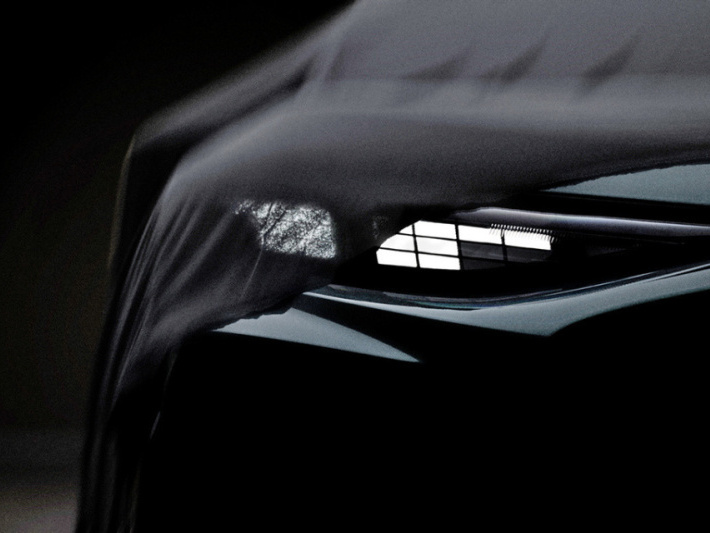
Beyond Expectations: All-New Audi Q3 Coming June 16
RobertJun 13, 2025
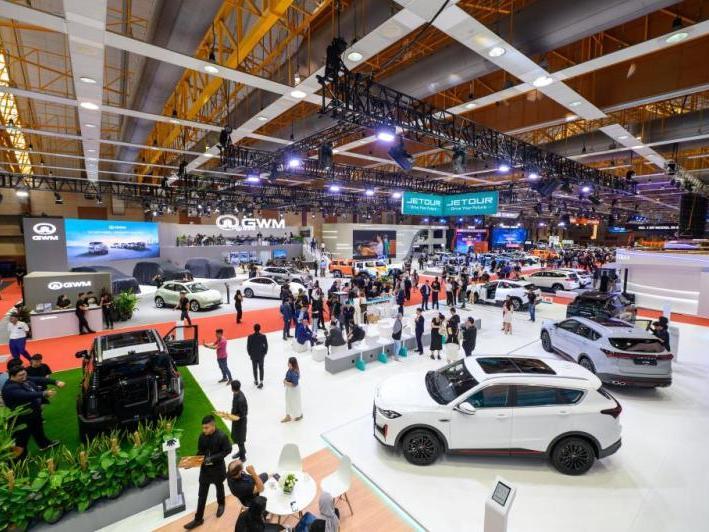
Summarizing the 2025 Malaysia Auto Show, a large number of new cars were launched in Malaysia this year.
MichaelMay 12, 2025
View More


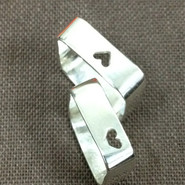






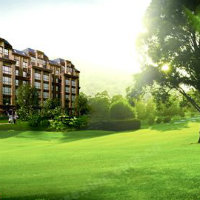


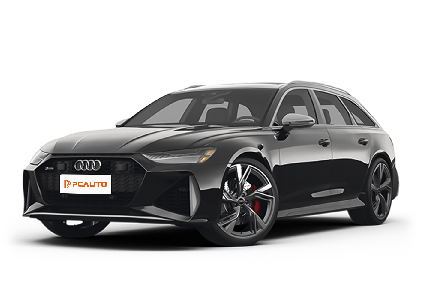





Pros
Cons